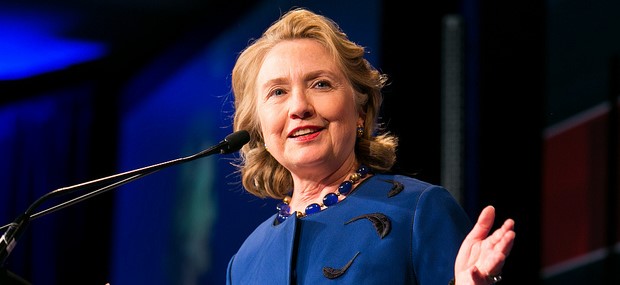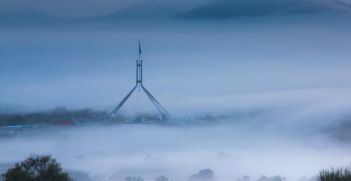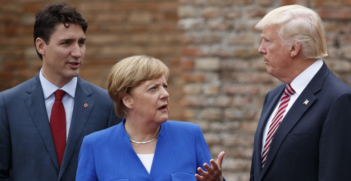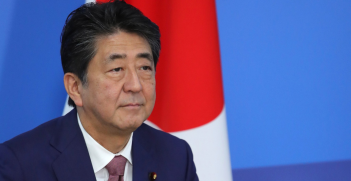“We’ll rebuild the Death Star. It’ll be amazing, believe me. And the rebels will pay for it.”
—Darth Trump
Sanders Key to Clinton’s Prospects as US Election Gets Serious

The more heated Sanders’ supporters become, the greater the likelihood of a messy Democratic National Convention. Trump’s unprecedented announcement of potential Supreme Court nominees reminds us what is at stake in this election.
Donald Trump has announced a list of 11 legal figures he would consider appointing to the US Supreme Court. All are stridently conservative.
More interestingly, they were heavily drawn from the South and Midwest, with none from Washington DC’s powerful district appeals court. Few had the Harvard/Yale educational background prevalent among the current occupants.
It was a not-so-subtle anti-Washington dig, mobilising for conservatives and sending frissons of fear among women’s groups aware of the Supreme Court’s capability to overturn the Roe v. Wade decision that liberalised abortion.
Any breadth in the list was the inclusion of Texas Supreme Court justice Don Willett – a conservative humorist with a number of anti-Trump tweets to his credit:
Another suggestion, Thomas Lee of Utah, would be the first Mormon justice were he to get it. That’s a pitch to another sceptical-but-critical element of the Republican base.
Trump immediately followed the now-familiar pattern of backing and filling on a seemingly firm statement. It was not a general list, just one for the vacancy caused by the death of Antonin Scalia. And, anyway, he might think of someone else.
Nevertheless, Trump was reminding the Republicans of what was at stake should he not be backed by them or defeated by a regular Republican running a third-party campaign in November.
Despite his limitation of the list to Scalia’s replacement, its pitch was broader. With liberal Justices Ruth Bader Ginsburg, 83, Stephen Breyer, 77, and occasional swing conservative Anthony Kennedy, 79, possible retirements next presidential term, the likelihood of a Supreme Court with a dramatically different ideological complexion is very much on the horizon.
Were Hillary Clinton to win, and assuming the lame-duck Senate does not seat President Barack Obama’s nominee, that appointment plus a Kennedy replacement would dramatically shift the Supreme Court to the left. On the other hand, a President Trump replacing Scalia then Ginsburg and Breyer would cement conservative control for generations.
The US Supreme Court membership has few parallels in Australia, where the focus on appointments is largely in the direction of legal excellence, and a retirement age of 70 ensures a regular turnover. But in bitterly ideologically divided America, it is everything. Major social issues, voting rights, electoral issues and environmental issues are as likely to be settled by the Supreme Court as by legislation.
The bitter sentiment in the Republican base – the feeling among the white middle class in particular that America has been taken away from them – is sent into overdrive by the prospect of a Supreme Court oriented towards liberal principles and the rights of minorities. It is another piece of exquisitely timed Trump weirdness; no other presidential candidate in history has taken a court discussion this far.
Most Republican identities do not want to endorse, much less campaign for, Trump. However, with the Republican Senate majority (the Senate must approve Supreme Court appointments) likely compromised by a messy campaign, the court message is a major gambit by Trump to rally the party behind him and remind it of the need for a triumphant nominating convention.
For the Democrats, for the opposite reasons, the Trump gambit is crucial.
If the Democratic nominee loses to Trump, the Senate will likely stay with the Republicans. With the Democrats out in Congress and a majority of the states, the way would be open to render them irrelevant for the foreseeable future. State legislatures and governors determine voting rules and federal boundaries.
With a Supreme Court upholding effective voting restrictions and boundary gerrymandering, let alone taking a conservative position on the plethora of social and environmental issues that come before it, America will be firmly taken away from them.
This explains Clinton’s frustration with Bernie Sanders and his followers’ increasingly strident and threatening campaign. It is the Democratic convention that now seems likely to be a mess. A “we wuz robbed” howl by Sanders’ supporters and a post-convention sulk by them may well elect Trump.
So far the primaries have been a “white fight”. It is white Americans who are most convinced that their children will not see better days than they did.
Influential election analyst Charlie Cook points out that while 54 per cent of whites believe their children will not be better off than they are, that figure is 10 per cent less for African-Americans and 17 per cent less for Hispanics.
For both the Republican and Democratic races, the driving force behind the campaign has been sentiment in the white community. For Sanders, that has been driven by the white-liberal-identifying community and young voters.
In a milder reprise of the 1968 new left and youth revolt (largely driven by arguments around the Vietnam War), which resulted in riots outside the Democratic Convention in Chicago in 1968 that rendered Vice President Hubert Humphrey unelectable and Richard Nixon president, Sanders partisans plan a raucous presence inside the convention.
Whites do not speak for all Americans. Non-whites and trade unions have come to Clinton’s aid. She has a substantial three million-vote lead over Sanders. Sanders’ victories in the main have come in the states that vote by caucus, not by popular votes.
Tuesday, June 7, will be the last great primary day. The six states that vote on that day include New Jersey (142 delegates), New Mexico (43 delegates) and, crucially, California (546 delegates). Sanders can no longer win but he is spoiling. Clinton has just dropped out of what was to be a final debate in California. She will no longer provide Sanders a destructive platform.
In a subtle message, Clinton analysed the position thus in a CNN interview last week:
“I went all the way to the end against then-senator Obama. I won nine out of the last 12 contests back in ‘08. I won Indiana, Kentucky, West Virginia. So I know the intense feelings that arise, particularly among your supporters as you go towards the end.
But we both were following the same rules, just as both Senator Sanders and I are following the same rules and I am 3 million votes ahead of him and I have an insurmountable lead in pledge delegates, and I am confident that just as I did with Senator Obama, where I said, you know what? It was really close. Much closer than it is between me and Senator Sanders right now.”
Clinton’s decision then was to vacate the field and support Obama. Her message to Sanders is: do the same now. He may not. He is not a Democrat and cares little for the party. He is a wildcard.
The Hon Kim Beazley AC FAIIA is the National President of the Australian Institute of International Affairs and former Australian ambassador to the United States. This article originally appeared on The Conversation on 25 May in his role as Senior Fellow, Perth USAsia Centre, University of Western Australia.





